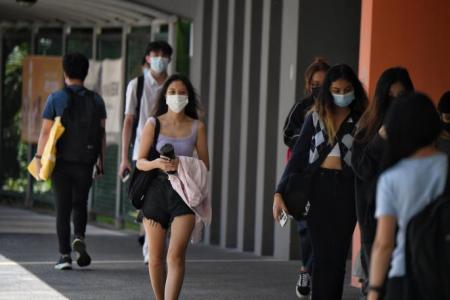More looking for work as job market improves for youths
Youth employment in Singapore saw significant improvement compared to the height of the pandemic in 2020, according to figures for last year.
The Ministry of Manpower (MOM) said in its 2021 labour market report on Monday (March 14) that the resident youth unemployment rate fell to was 7.3 per cent, from 10.6 per cent in 2020. Resident youth refers to citizens and permanent residents, aged 15 to 24.
Young people last year found employment mainly in sectors such as public administration and education, health and social services, and in the wholesale and retail trade amid more optimistic economic conditions.
The improved economy also attracted more youths to enter the job market, said MOM.
The youth labour force participation rate stood at 41.3 per cent in 2021, higher than rates of around 38 per cent in the pre-Covid-19 years of 2018 and 2019.
The increased participation led to a higher youth unemployment rate in 2021 compared to pre-Covid-19 level of 6.6 per cent in 2018, noted MOM.
The ministry said that youth unemployment here is largely transitory and short-term.
"This means that they are less likely to be long-term unemployed, compared to their more mature counterparts, who are more likely to spend additional time in seeking equivalent jobs."
In 2021, the percentage of unemployed youth who are long-term unemployed was 16.4 per cent, which is lower than the corresponding percentage for older age groups.
For instance, 34.6 per cent of those aged 50 to 59 without jobs were long-term unemployed.
Also, while there was a slight 1.2 per cent rise in the youth long-term unemployment rate in 2021, it was comparable to previous crises - the 2003 Sars pandemic (1.3 per cent) and 2009 global financial crisis (1 per cent)."
Of resident youth who were employed, a small majority - or about 56 per cent - worked full-time in June 2021, compared to about 53 per cent in the same quarter for 2018.
In the report, MOM also said Singapore has a low prevalence of youth not in employment, education or training.
"This suggests that economic 'idleness' was less of an issue" in Singapore, it said.
MOM added that the prevalence of such youth dropped to 4.5 per cent, from 5.3 per cent at the height of the Covid-19 pandemic in 2020.
"This reflects our quality education and training system, which helps youth with their transition into the labour force successfully as youth seek more full-time employment in 2021."
Get The New Paper on your phone with the free TNP app. Download from the Apple App Store or Google Play Store now


